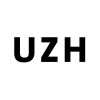Measuring Cyclotorsion on Scanning Laser Ophthalmoscopy (SLO)-Fundus Photographs (CySLO)
Trochlear Nerve Diseases

About this trial
This is an interventional diagnostic trial for Trochlear Nerve Diseases
Eligibility Criteria
Inclusion Criteria:
- ≥ 18 years old
- best corrected visual acuity ≥ 0.8
Exclusion Criteria:
- strabismus except for forth nerve palsy
- previous strabismus surgery
- monocle
- best corrected visual acuity ≤ 0.6
- hyperopia or myopia > 6dpt
Sites / Locations
- University Hospital Zurich, Dept of Ophthalmology
Arms of the Study
Arm 1
Arm 2
Arm 3
Experimental
Experimental
Experimental
inter- & intrarater reliability study
cyclotorsion in forth nerve palsy
cyclotorsion in healthy subjects
pre-study: inter- and intrarater reliability study in 30 healthy subjects, interventions: SLO-fundus photographs using the integrated algorithm by Heidelberg Spectralis OCT (optical coherence tomography) device
measurement of cyclotorsion on SLO-fundusphoto in 20 patients forth nerve palsy interventions: SLO-fundus photographs using the integrated algorithm by Heidelberg Spectralis OCT (optical coherence tomography) device
measurement of cyclotorsion on SLO-fundusphoto in 30 healthy subjects to be compared to patients with forth nerve palsy interventions: SLO-fundus photographs using the integrated algorithm by Heidelberg Spectralis OCT (optical coherence tomography) device
Outcomes
Primary Outcome Measures
Secondary Outcome Measures
Full Information
1. Study Identification
2. Study Status
3. Sponsor/Collaborators
4. Oversight
5. Study Description
6. Conditions and Keywords
7. Study Design
8. Arms, Groups, and Interventions
10. Eligibility
12. IPD Sharing Statement
Learn more about this trial
